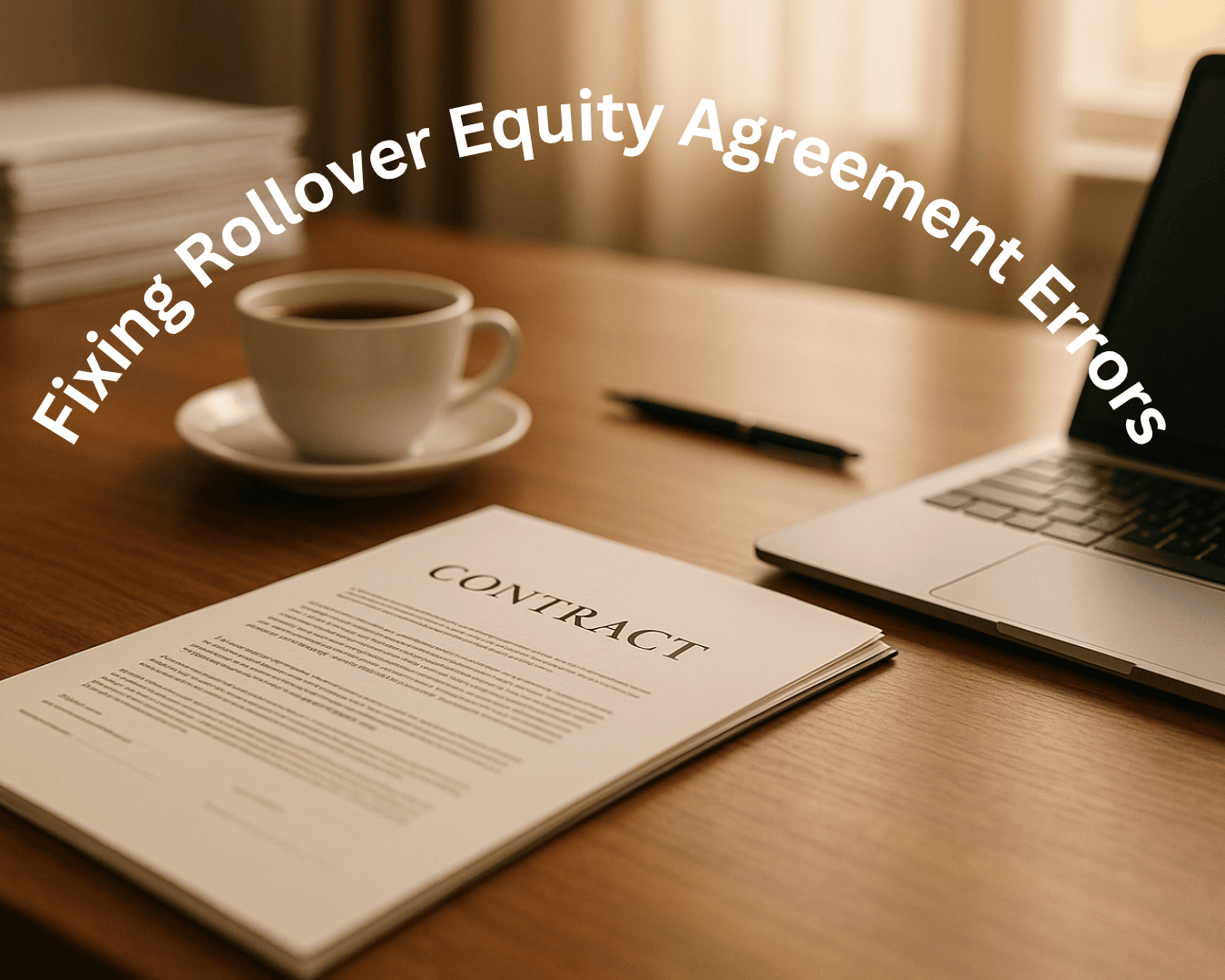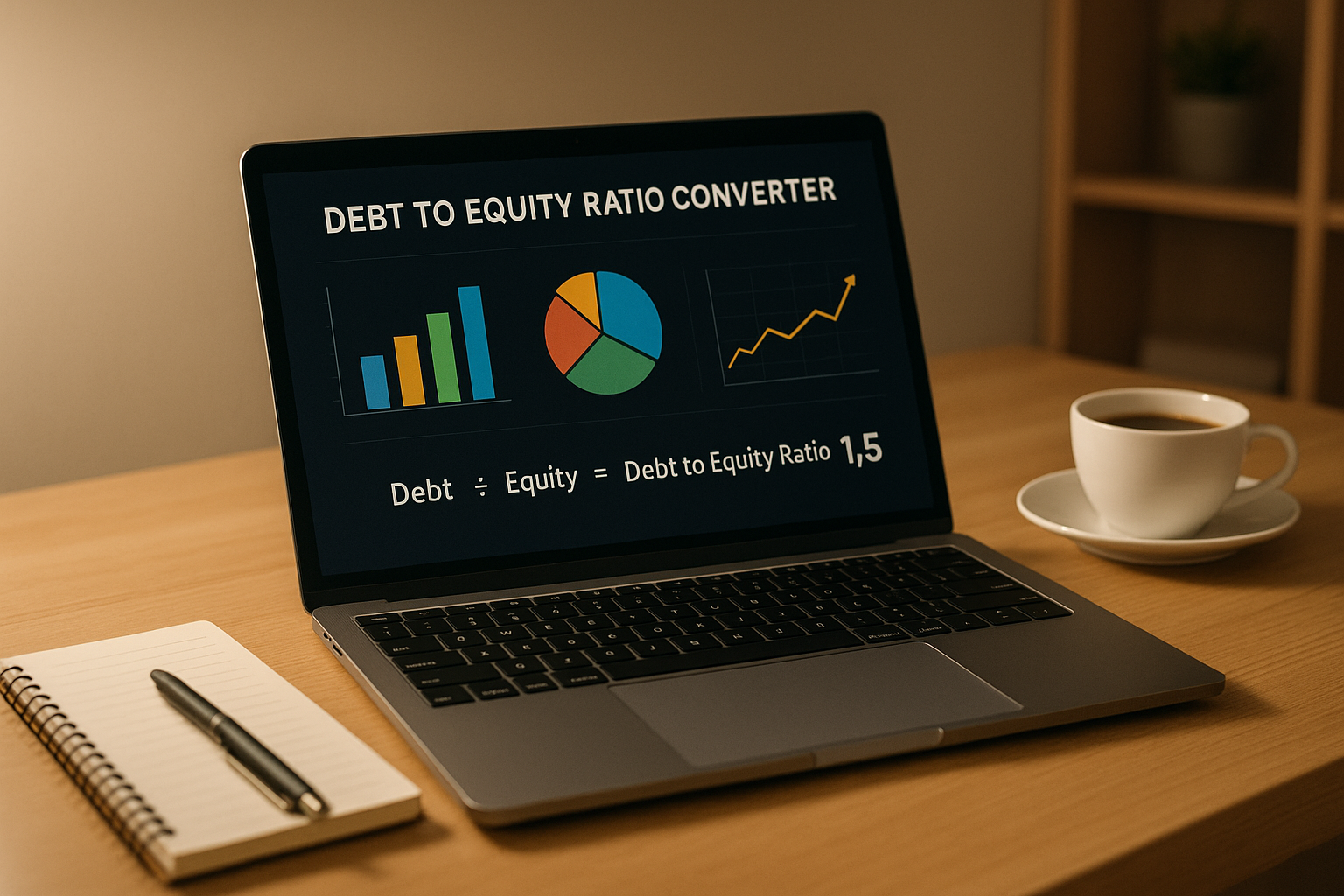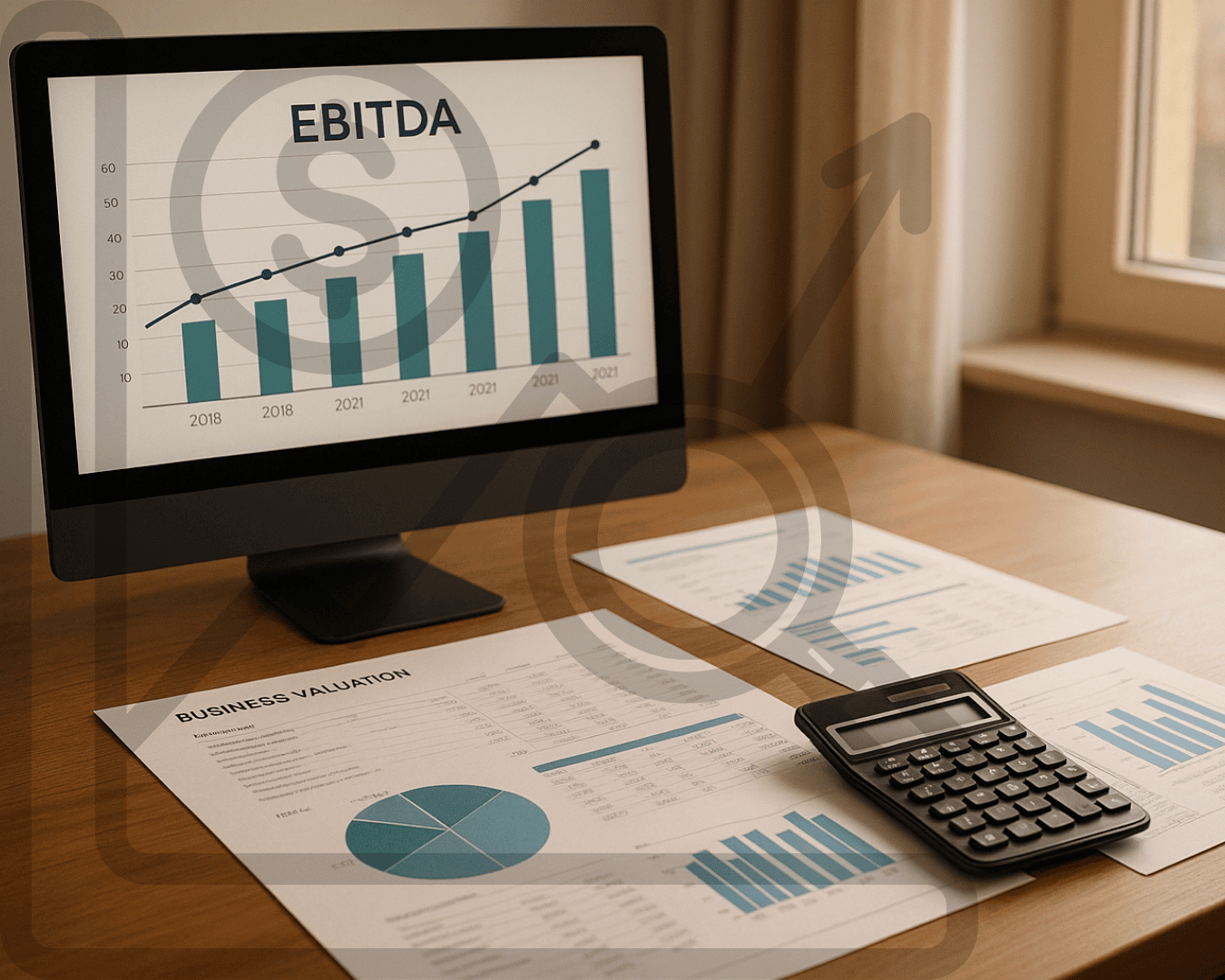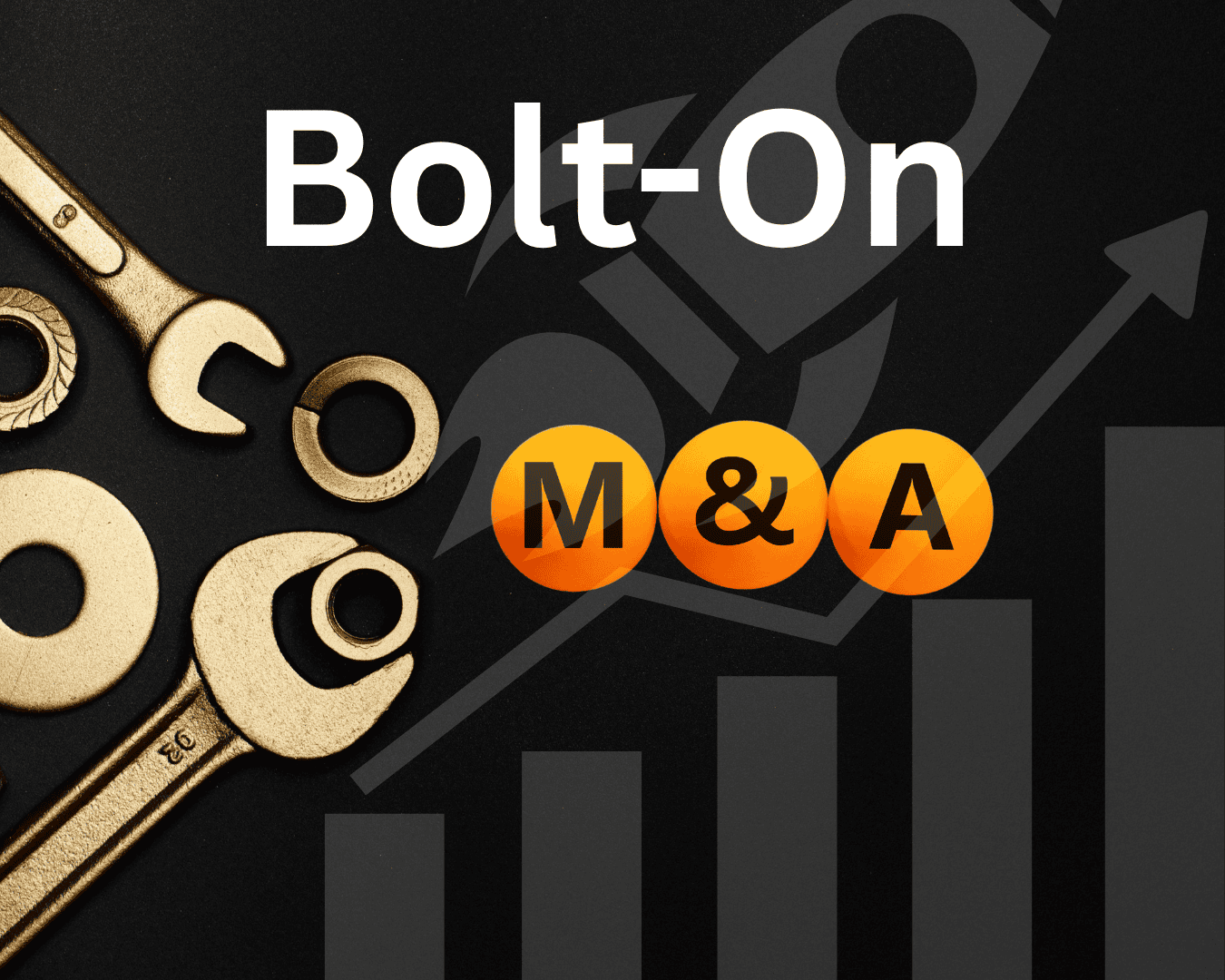When evaluating acquisitions, there are two primary types of metrics you need to understand: M&A metrics and deal flow metrics. Here's the key distinction:
- M&A Metrics focus on the performance of individual transactions. They measure financial health, operational success, and post-deal outcomes, such as revenue growth, customer retention, and employee productivity.
- Deal Flow Metrics track the efficiency of your acquisition pipeline. They measure how well potential deals progress through stages like sourcing, evaluation, and closing, focusing on volume, conversion rates, and time spent at each stage.
Both types are essential for acquisition success. While M&A metrics help evaluate the impact of specific deals, deal flow metrics ensure your pipeline is running smoothly to identify and close quality opportunities. By combining these metrics into a unified system, you can better connect sourcing efforts to transaction outcomes and improve decision-making across the board.
How to Analyze SMB Deals Like an M&A Pro: Identify BAD DEALS in 5 Minutes Flat
What Are M&A Metrics
M&A metrics are key performance indicators (KPIs) used to measure how well a company performs during mergers and acquisitions. Think of them as a report card that evaluates financial and operational success throughout the entire M&A process - from identifying potential targets to integrating post-deal operations.
These metrics serve multiple purposes. They help pinpoint suitable acquisition targets, assist in thorough due diligence, and guide decision-making during the deal. More importantly, they provide a framework to evaluate whether the acquisition is delivering the expected returns. By closely monitoring these metrics, companies can manage risks and address problems before they grow into major issues.
M&A metrics combine both financial and non-financial data, offering a broad perspective on performance. This can range from tracking revenue growth to assessing employee satisfaction. Let’s dive into some common examples and the systems needed to track them effectively.
Common M&A Metrics Examples
M&A metrics generally fall into three main categories: revenue, customer, and employee KPIs.
- Revenue Metrics: These are often the cornerstone of performance evaluation. Metrics like sales and revenue growth highlight the acquired company’s ability to generate steady cash flow. Gross profit margin, on the other hand, reveals how much of that revenue becomes profit after expenses.
- Customer Metrics: These give insight into market relationships. For example, customer retention rate shows how well the company retains its clients, while customer lifetime value (LTV) estimates how much revenue a customer contributes over their relationship with the business.
- Employee Metrics: These are equally critical, especially during integration. Employee retention rates can highlight potential cultural clashes, while productivity metrics offer a snapshot of overall company efficiency.
Real-world examples show how focusing on the right metrics can lead to success. In one notable tech merger, a leading company acquired a smaller competitor and prioritized cost and revenue synergies. Within the first year, this approach cut operational costs by 20% and boosted revenue by 15%. In another case, a cross-border acquisition focused on employee integration. By implementing a structured program, the acquiring company retained most of its employees and received positive feedback in staff surveys a year after the merger.
Valuation metrics also play a role, often relying on projections, forecasts, and historical data. These include assessing intangible assets - like brand value or intellectual property - that don’t show up on traditional balance sheets but hold considerable worth.
Requirements for Tracking M&A Metrics
Tracking M&A metrics effectively requires robust systems and disciplined processes. It starts with accurate financial reporting to ensure reliable and timely data across all performance areas. Standardized evaluation frameworks are also critical, as they create consistency across different deals and allow for ongoing monitoring.
Data systems should capture both quantitative metrics - like cash flow and debt-to-equity ratios - and qualitative factors such as customer satisfaction or employee morale. Once the data is collected, regular analysis is crucial. This helps identify trends, catch potential problems early, and confirm whether the acquisition strategy is on track. Companies that rely on a mix of metrics, rather than just one or two, tend to get a clearer picture of deal performance and avoid misinterpretations.
Technology has become a game-changer in metric tracking. Modern tools can integrate multiple data sources and provide real-time insights, making it easier to adapt quickly in today’s dynamic M&A environment. With these systems in place, companies are better prepared to compare M&A metrics with deal flow metrics, setting the stage for a more detailed analysis in the next section.
What Are Deal Flow Metrics
Deal flow metrics are key performance indicators that measure how effectively potential acquisitions move through your pipeline. Unlike M&A metrics, which assess completed transactions, deal flow metrics focus on the earlier stages, tracking how well prospects progress through the acquisition funnel.
"Deal flow refers to the pipeline of potential investment opportunities evaluated by a firm, from sourcing to deal completion. Efficient management ensures clear visibility, streamlined collaboration, and faster decisions on which deals to pursue." – Intralinks
These metrics provide an early snapshot of your pipeline's health. They highlight whether your sourcing efforts are bringing in quality opportunities and help pinpoint bottlenecks that might slow progress. By balancing both qualitative and quantitative factors, firms can make informed decisions about which deals to prioritize. Tracking deal flow is essential for spotting promising opportunities and ensuring resources are allocated effectively. This proactive approach sets deal flow metrics apart from M&A metrics, which focus on outcomes after a deal is finalized.
Common Deal Flow Metrics Examples
To better understand deal flow metrics, let’s look at some specific examples that help measure the efficiency of your acquisition pipeline.
- Volume, velocity, and conversion: The number of deals sourced shows whether your efforts are building a strong pool of opportunities.
- Pipeline conversion rates: These metrics reveal how well prospects move from initial contact to serious consideration. Low conversion rates can signal a need to refine your qualification criteria.
- Average time in each stage: This measures how quickly deals progress through the pipeline. Identifying stages where deals tend to stall can help set realistic timelines and improve process efficiency.
- Source effectiveness: Tracks which channels - like direct outreach, broker relationships, industry networks, or online platforms - generate the best opportunities. Evaluating both the quantity and quality of deals from each source helps fine-tune your sourcing strategy.
- Deal-to-close ratios: Indicates the percentage of pipeline opportunities that result in completed acquisitions.
- Average deal size by source: Helps identify which channels are delivering deals that align with your investment goals.
Requirements for Tracking Deal Flow Metrics
Accurate tracking of deal flow metrics requires the right tools and processes. Here’s what you need to stay on top of your pipeline:
- Pipeline management tools: These tools should capture key data points, such as the opportunity’s source, evaluation status, decision milestones, and timelines.
- Clear process definitions: Define criteria for moving deals through each stage, set typical timeframes, and assign responsibilities to ensure consistency and reliability in evaluations.
- Consistent tracking of qualitative and quantitative factors: Go beyond numbers - record qualitative insights like strategic fit, management team strength, and market position for a more comprehensive view.
- Advanced analytics platforms: These platforms can visualize the journey from deal sourcing to close, identify where deals drop off, and track team activity and response times. By regularly reviewing deal flow data, teams can address stalled deals or underperforming channels, making continuous improvements to the acquisition process.
sbb-itb-a3ef7c1
Main Differences Between M&A Metrics and Deal Flow Metrics
While both M&A metrics and deal flow metrics are essential for acquisitions, they operate on entirely different levels. M&A metrics focus on the success of specific transactions, tracking elements like task prioritization, risk management, employee satisfaction, compliance, and resource allocation within individual deals. These metrics are designed to help teams make well-informed decisions during a particular M&A process.
On the other hand, deal flow metrics take a broader view. Instead of focusing on a single transaction, they aim to optimize the entire pipeline of potential acquisitions. These metrics are all about identifying effective strategies to ensure more opportunities progress successfully through the M&A pipeline.
Different Stakeholders, Different Needs
The users of these metrics also vary significantly. M&A metrics are primarily used by deal teams - such as corporate development professionals, legal advisors, and investment bankers - who need to evaluate a company’s performance against specific goals, targets, or industry competitors. Deal flow metrics, however, serve a broader audience, including corporate development teams responsible for scouting acquisition targets, conducting preliminary evaluations, and managing the entire pipeline of opportunities.
"For a serious strategic acquirer, the building of a strong M&A pipeline makes absolute sense and is something that senior management needs to constantly spend time on." – Christopher Kummer, Advisor on Strategy, M&A, and HR
Data Sources and Timing
The type of data these metrics rely on further highlights their differences. M&A metrics draw from transaction-specific data, including financial statements, due diligence reports, integration progress, and post-deal performance. Meanwhile, deal flow metrics leverage pipeline systems to track sourcing, qualification, stage progression, and conversion rates.
Given that 70-90% of M&A deals fail, the role of these metrics becomes even more critical. In 2022 alone, nearly 50,000 mergers and acquisitions were completed globally. While deal flow metrics help manage the sheer volume of potential deals, M&A metrics focus on optimizing the success of individual transactions.
Side-by-Side Comparison of M&A Metrics vs Deal Flow Metrics
| Aspect | M&A Metrics | Deal Flow Metrics |
|---|---|---|
| Primary Purpose | Track task prioritization, risks, employee satisfaction, compliance, and resource allocation within specific deals | Improve processes and operational efficiency across the entire deal pipeline, from sourcing to closing |
| Key Stakeholders | Deal teams, legal advisors, and investment bankers working on individual transactions | Corporate development teams and senior management overseeing pipeline strategy |
| Data Sources | Transaction-specific financial data, due diligence reports, integration metrics | Pipeline management systems, sourcing channel data, and conversion tracking |
| Decision-Making Impact | Guide decisions throughout a specific M&A process | Identify strategies to improve pipeline progression and deal conversion rates |
| Timeframe Focus | Pre-deal through post-integration for individual transactions | Continuous management of multiple opportunities across the pipeline |
| Success Measurement | Performance against targets, objectives, or industry benchmarks | Efficiency and effectiveness of the deal pipeline |
| Scope | Focused on individual transactions | Focused on overall pipeline management and strategy |
This comparison illustrates how each type of metric plays a distinct role in acquisition strategies. Together, they provide a comprehensive view, enabling better decision-making and more effective tracking across the M&A landscape. By understanding these differences, teams can integrate both metrics into acquisition dashboards for a more holistic approach.
Combining Metrics in Acquisition Dashboards
When it comes to SMB acquisitions, having a unified dashboard does more than just simplify performance tracking - it makes decision-making faster and more efficient. By consolidating M&A and deal flow metrics into a single platform, businesses can uncover critical connections between sourcing strategies and transaction outcomes. Tracking these metrics separately often hides the links that show how sourcing impacts the success of deals.
An effective dashboard combines real-time pipeline updates with detailed transaction performance tracking. This allows corporate development teams to monitor the effectiveness of sourcing channels while also keeping an eye on how deals progress through stages like due diligence, negotiation, and integration. When all metrics are viewed together, the data becomes actionable, helping teams determine whether strong deal flow leads to successful closures and solid post-acquisition results.
To build these combined dashboards, teams need to focus on clear data priorities and seamless integration. The first step is identifying the most important data points for their acquisition strategy, such as the relationship between deal flow metrics and successful outcomes. Next, both data streams must feed into a unified framework for analysis. The technical setup is key here - M&A analytics depend on timely, high-quality data. Tools like Salesforce or Dynamo are often vital for capturing deal flow information, and integrating these tools with transaction management platforms ensures centralized data access and informed decision-making. Platforms like Clearly Acquired are designed specifically for this purpose, simplifying metric tracking for SMB acquisitions.
Using Clearly Acquired for Metric Tracking
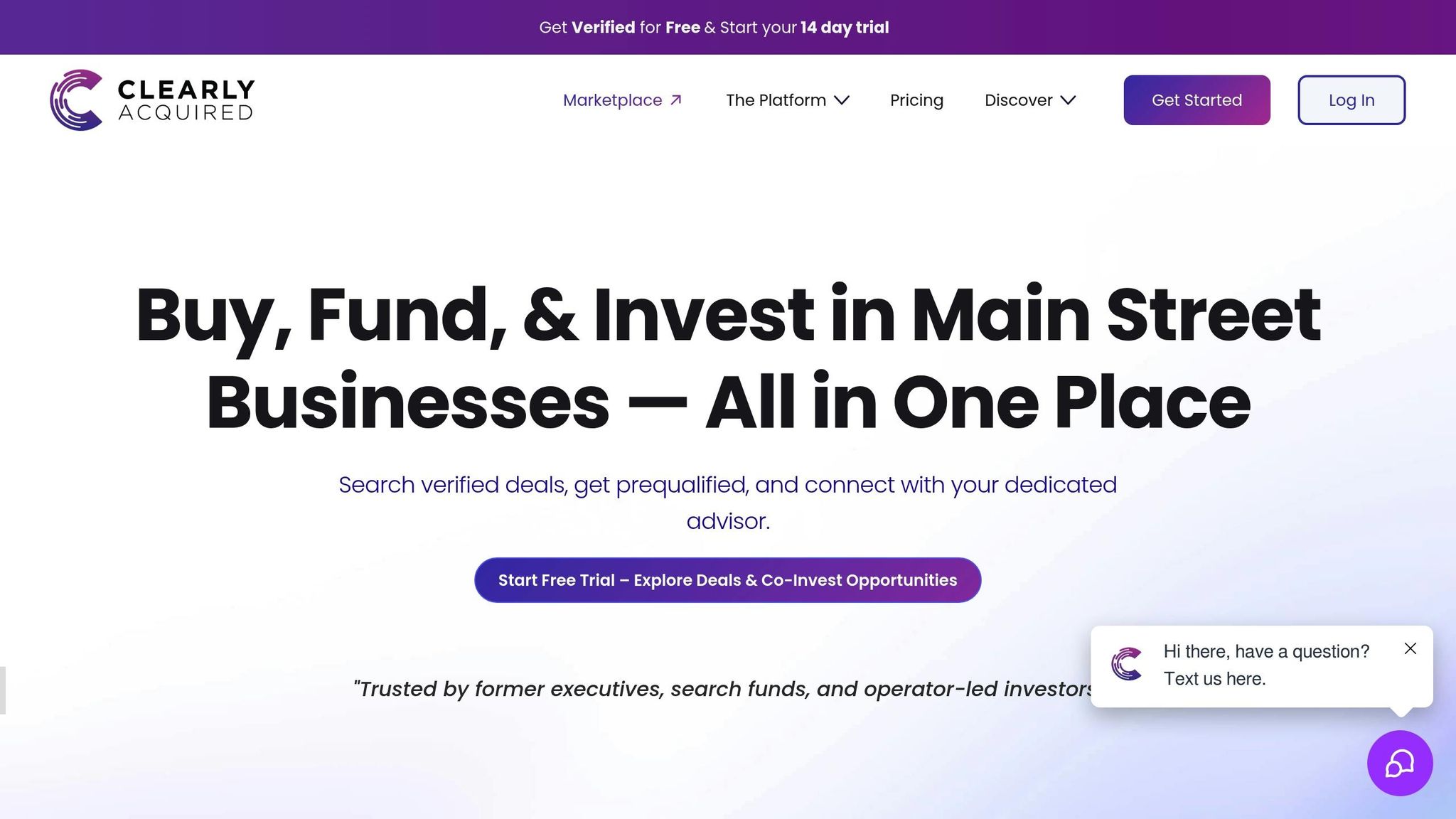
Clearly Acquired tackles the challenge of integrating metrics by bringing M&A and deal flow analytics together in user-friendly dashboards tailored for Main Street acquisitions. Powered by AI, the platform tracks key performance indicators across the entire process, from sourcing deals to post-closing integration. Its real-time tracking and automated workflows are designed to meet the specific needs of SMB acquisitions, eliminating the hassle of manual data entry.
The platform also acts as a central hub, displaying essential M&A and deal flow metrics customized for each user. Whether someone is focused on sourcing new opportunities or managing active deals, Clearly Acquired provides the tools to stay on top of performance. Its verified deal flow system ensures high-quality data, creating a reliable foundation for effective M&A analytics.
U.S. Formatting Standards
Once a dashboard successfully consolidates data, using U.S. formatting standards ensures that everything is clear and consistent. Monetary values should include the dollar sign ($) with commas separating thousands (e.g., $1,250,000 for acquisition costs or $50,000 for monthly revenue). Dates should follow the MM/DD/YYYY format, such as 03/15/2025 for an initial contact date or 07/30/2025 for a projected closing. Conversion rates and other metrics should use periods for decimals and commas for thousands (e.g., 15.7% or 1,247 opportunities). Sticking to these standards is particularly important when creating reports and dashboards that will be shared across teams or with external stakeholders, ensuring everyone interprets the data correctly.
Conclusion
Grasping the differences between M&A metrics and deal flow metrics is crucial for making well-informed acquisition decisions in today’s fast-paced market. While M&A metrics focus on assessing a target company’s financial health and growth potential, deal flow metrics measure how efficiently deals are sourced, evaluated, and executed. Together, these metrics offer a full picture of the acquisition process, which is vital considering that an estimated 70–90% of M&A deals don’t achieve their intended goals. This makes thorough tracking a non-negotiable part of the process.
By integrating these metrics, companies can connect the dots between sourcing strategies and transaction outcomes. For instance, M&A metrics might highlight that a target company represents good value - such as the average revenue multiple for AI M&A deals hitting 25.8x in 2025. Meanwhile, deal flow metrics ensure that internal processes are streamlined to take advantage of such opportunities by monitoring how efficiently deals are sourced and progressed.
This integration doesn’t just improve operational clarity - it also strengthens strategic decision-making. As IAG M&A Advisors aptly puts it:
"Strategic planning isn't just a part of M&A decision-making; it's the backbone that holds the whole process together".
Blending external market insights with internal process efficiency is key to making smarter, data-driven decisions in high-stakes transactions.
To improve outcomes, investing in platforms that track both the quality of potential deals and the efficiency of execution is critical. This dual focus helps firms mitigate the substantial risks of M&A transactions and increases their chances of joining the 10–30% of acquisitions that succeed.
FAQs
What’s the difference between M&A metrics and deal flow metrics, and how do they work together to improve acquisitions?
M&A metrics are all about assessing the quality and potential success of a deal. They focus on factors like financial performance, valuation multiples, and how well the integration goes after the acquisition. On the flip side, deal flow metrics zero in on the quantity and efficiency of sourcing opportunities. These include tracking the number of deals reviewed, leads generated, and conversion rates.
By combining these two sets of metrics, you get a well-rounded view of the acquisition process. Deal flow metrics ensure there’s a steady stream of opportunities coming in, while M&A metrics help you evaluate and prioritize the best ones. Together, they support smarter decisions, lower risks, and pave the way for more successful acquisitions.
What are the best tools for tracking M&A and deal flow metrics effectively?
To keep tabs on M&A metrics and deal flow metrics, having the right tools is key. Using software designed specifically for acquisition management and deal sourcing can make the entire process much more efficient. M&A-focused platforms simplify project management, while deal flow management systems help you track opportunities from beginning to end. Look for tools that offer centralized data tracking, automated workflows, and advanced analytics to help you make informed, data-backed decisions.
Take platforms like Clearly Acquired, for example. They offer an all-in-one solution that integrates capital, advisory services, and management tools. This makes the acquisition process smoother - whether you're sourcing verified deals, securing funding, or managing transactions. With the right software in place, you can stay organized and focus on closing deals that truly matter.
Why is combining M&A metrics and deal flow metrics into one dashboard crucial for better decision-making?
Integrating M&A metrics and deal flow metrics into a single dashboard simplifies the acquisition process by offering a real-time, consolidated view of essential data. This approach minimizes manual mistakes, saves time, and keeps everyone on the same page.
Having all critical metrics in one place allows you to make quicker, well-informed decisions, spot opportunities, and address risks efficiently - helping you get the most out of every deal.
















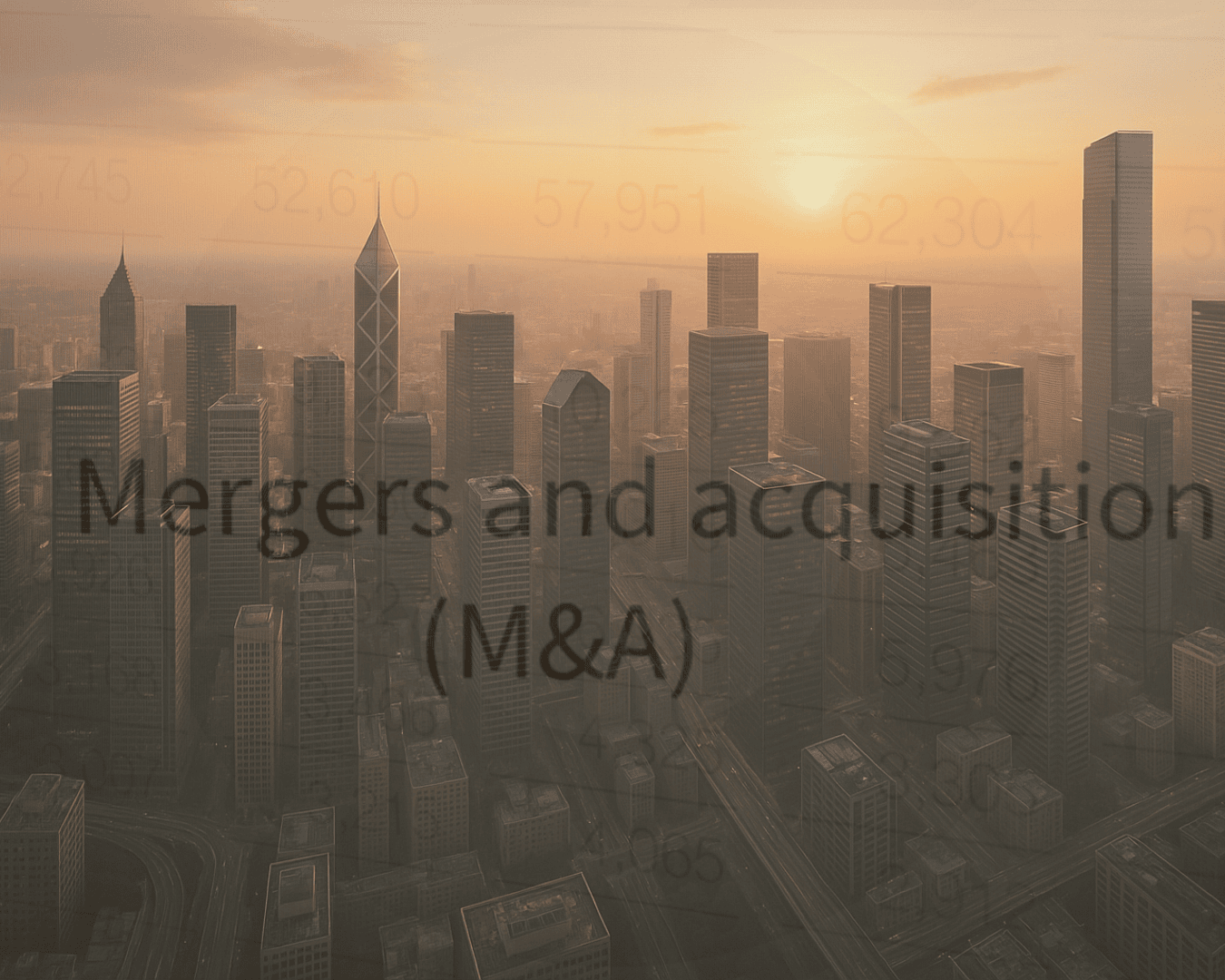










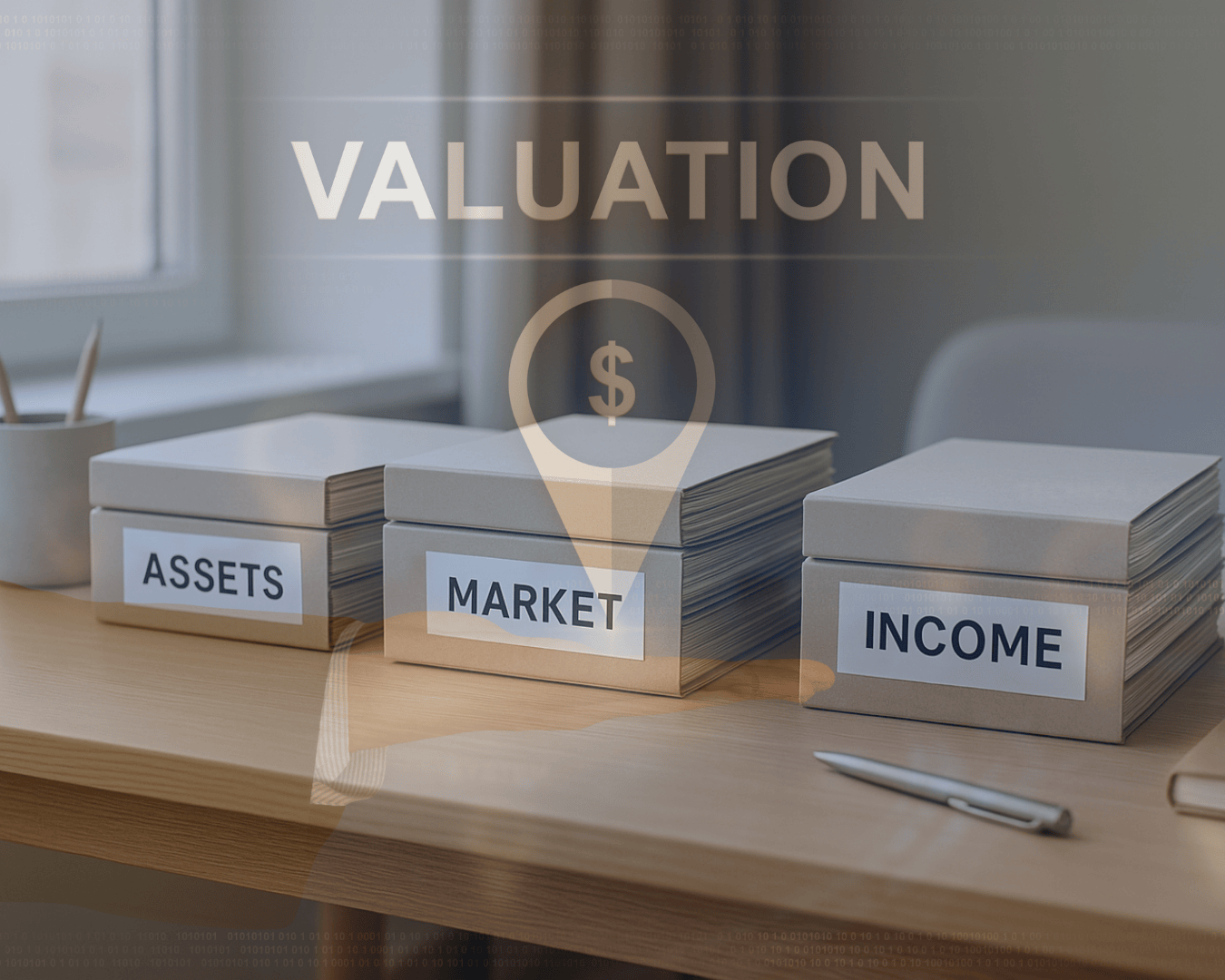












.png)

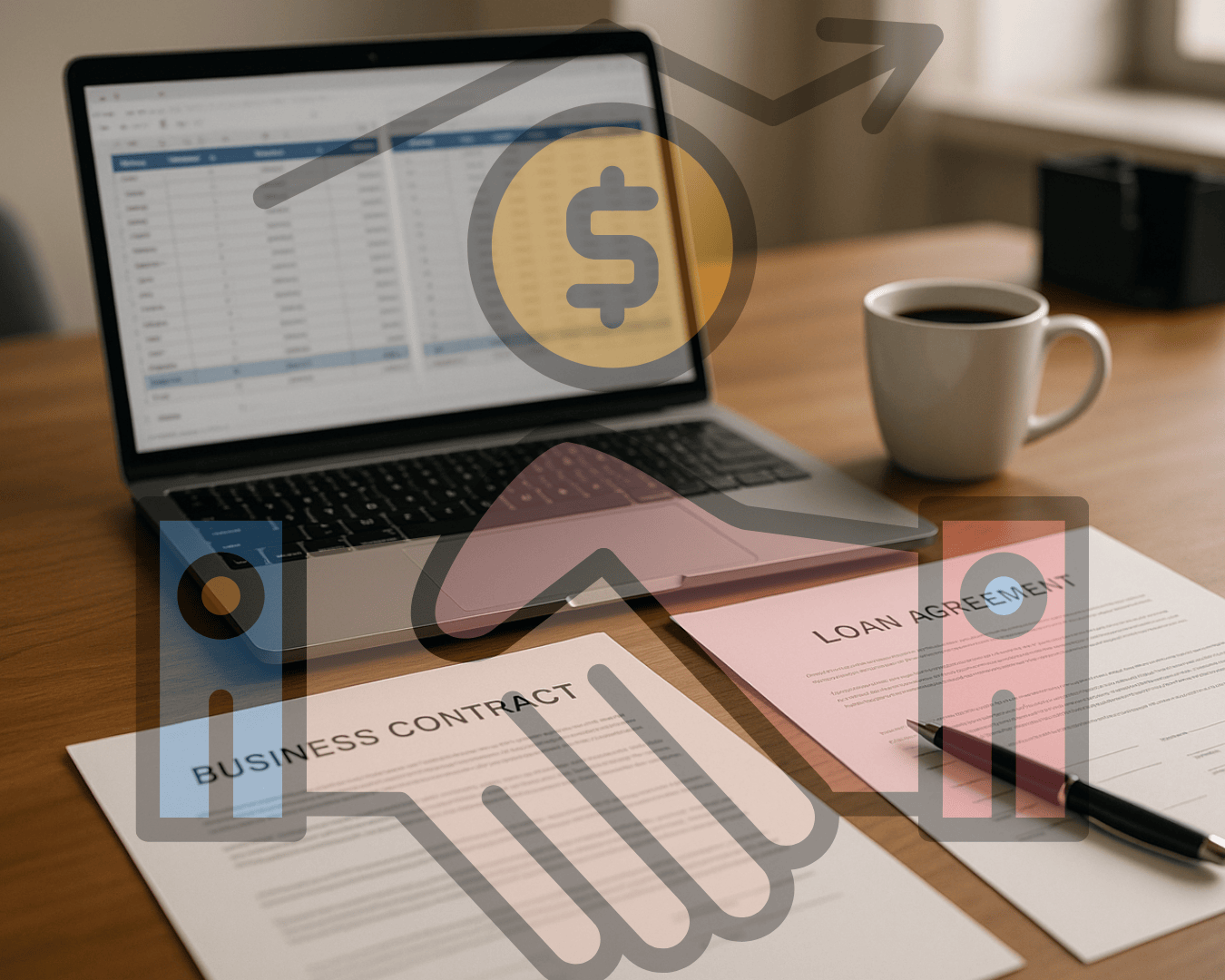








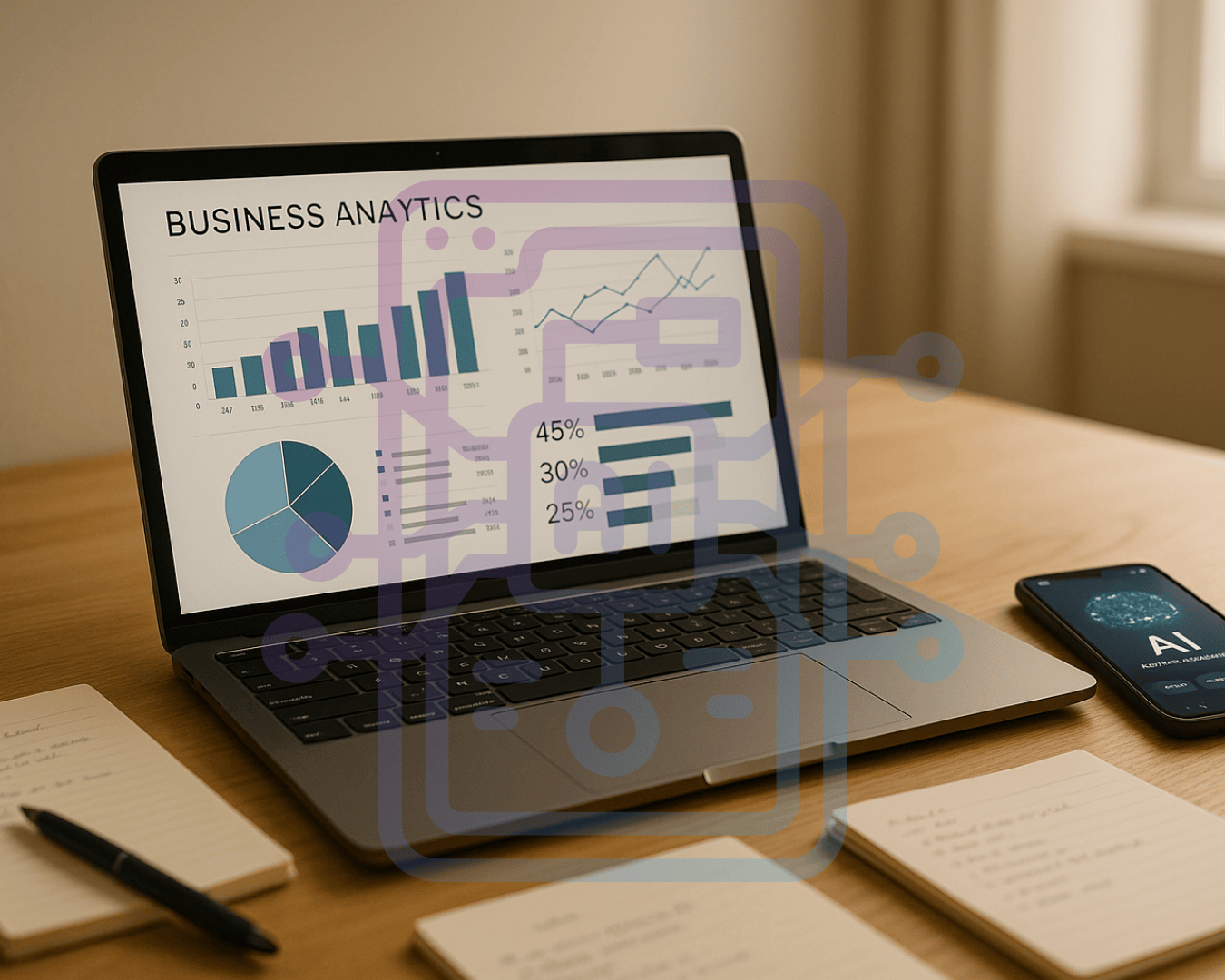






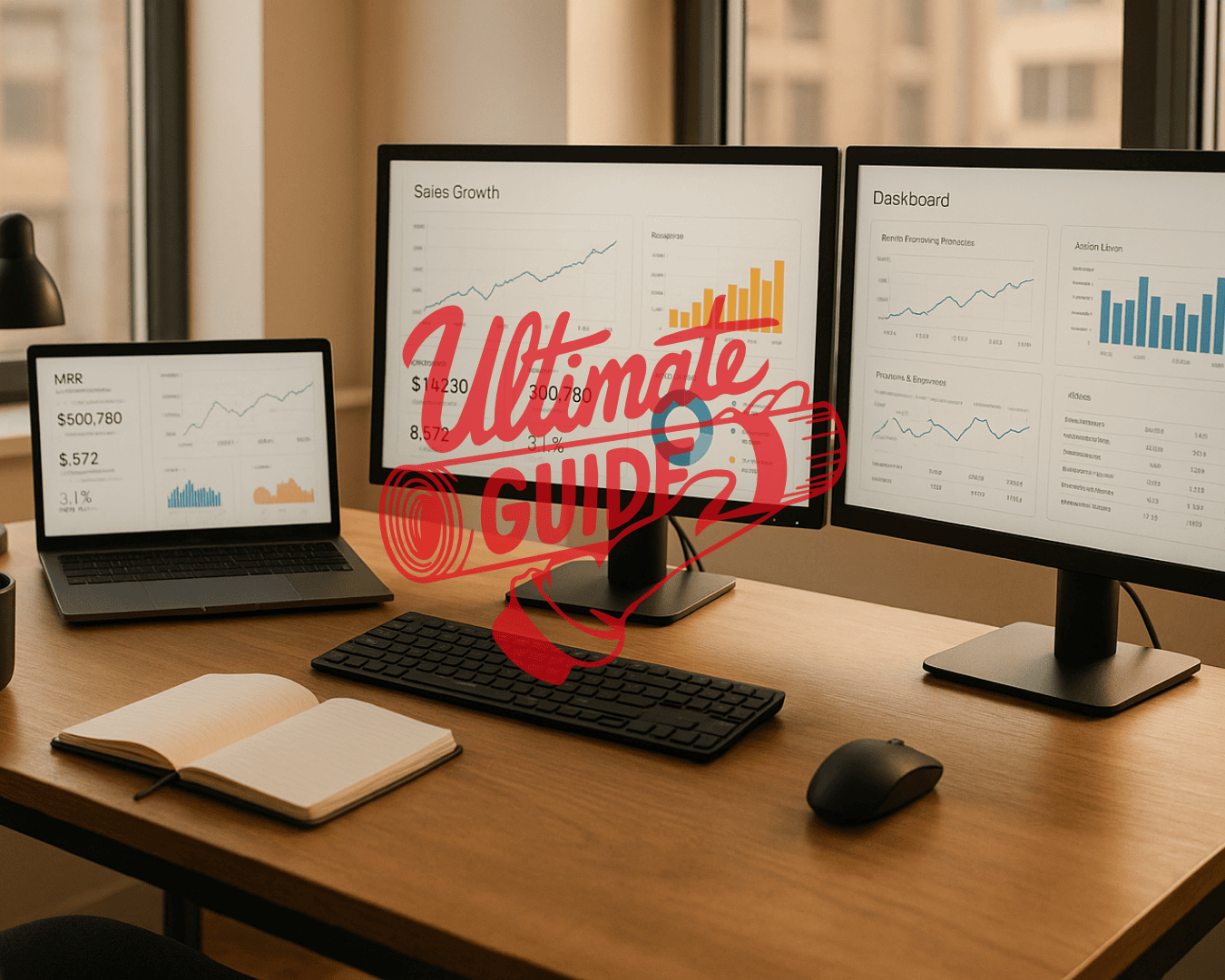




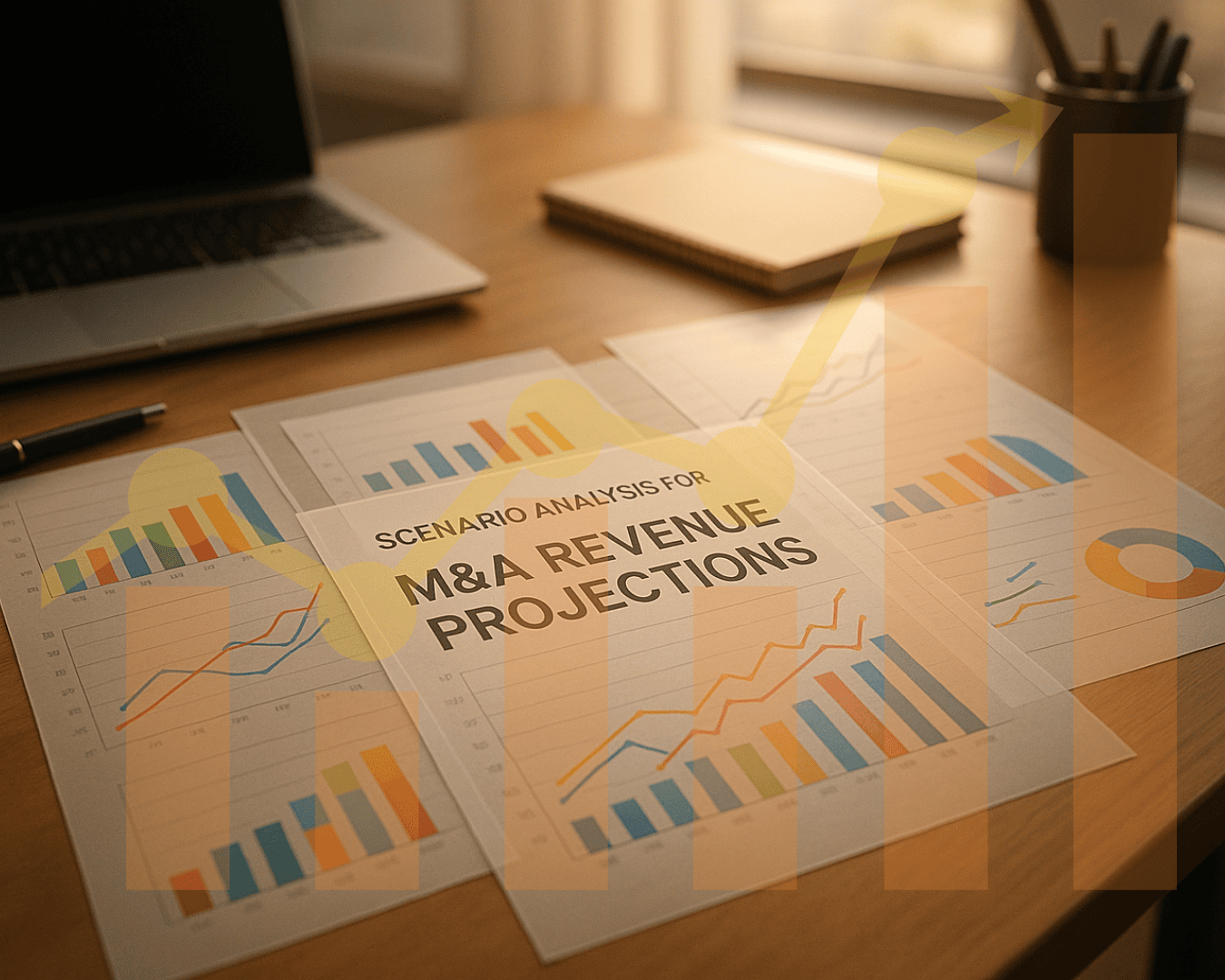





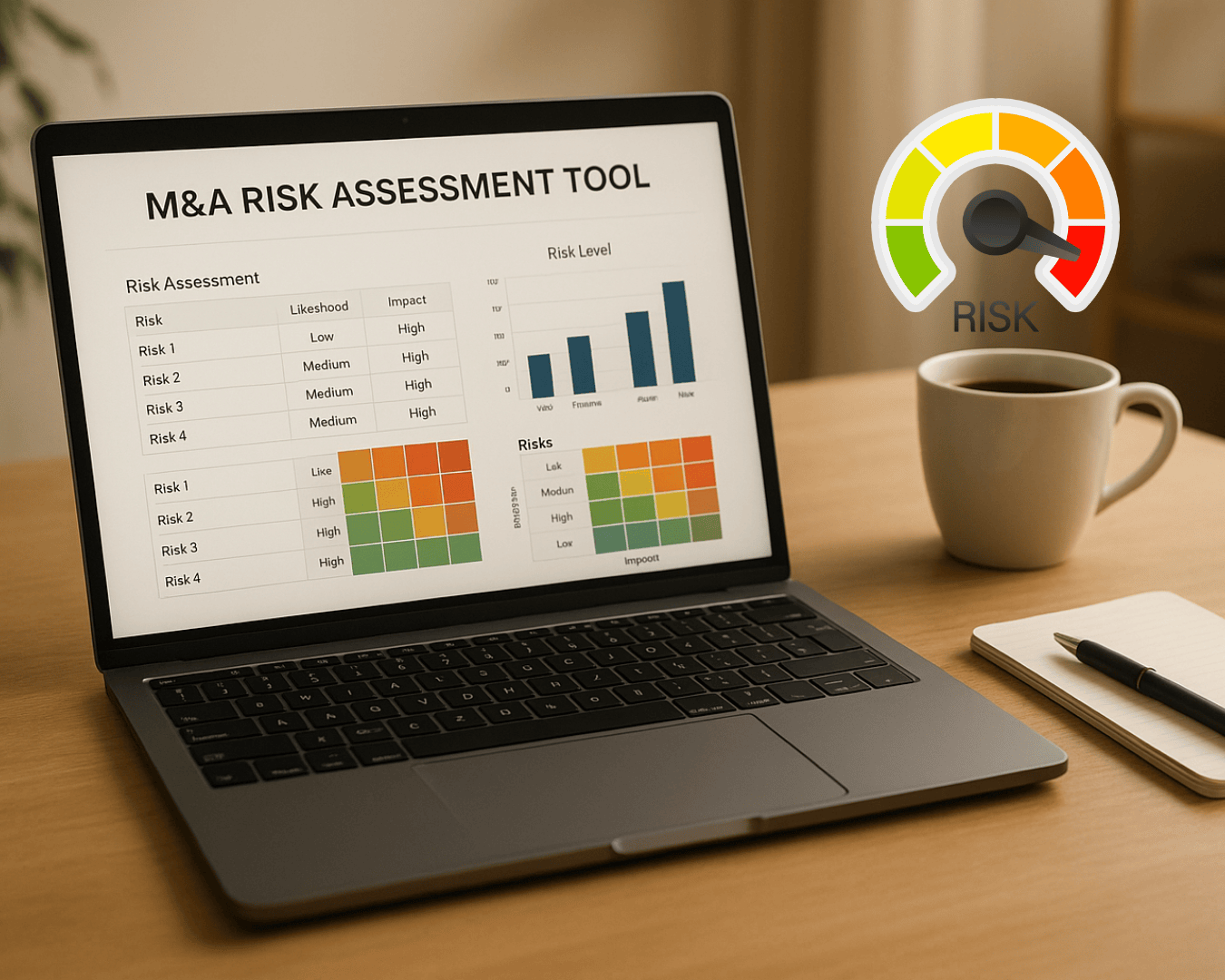
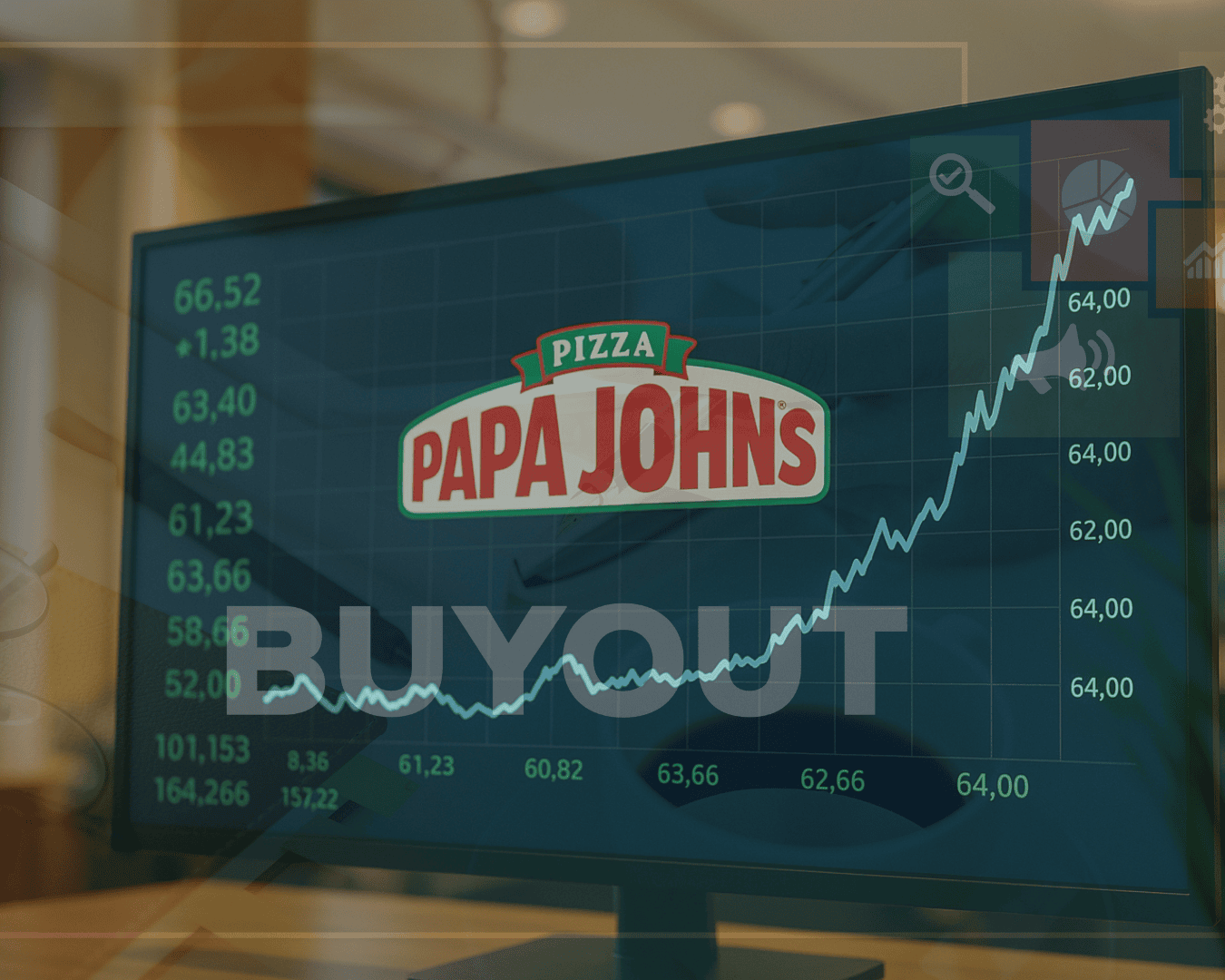

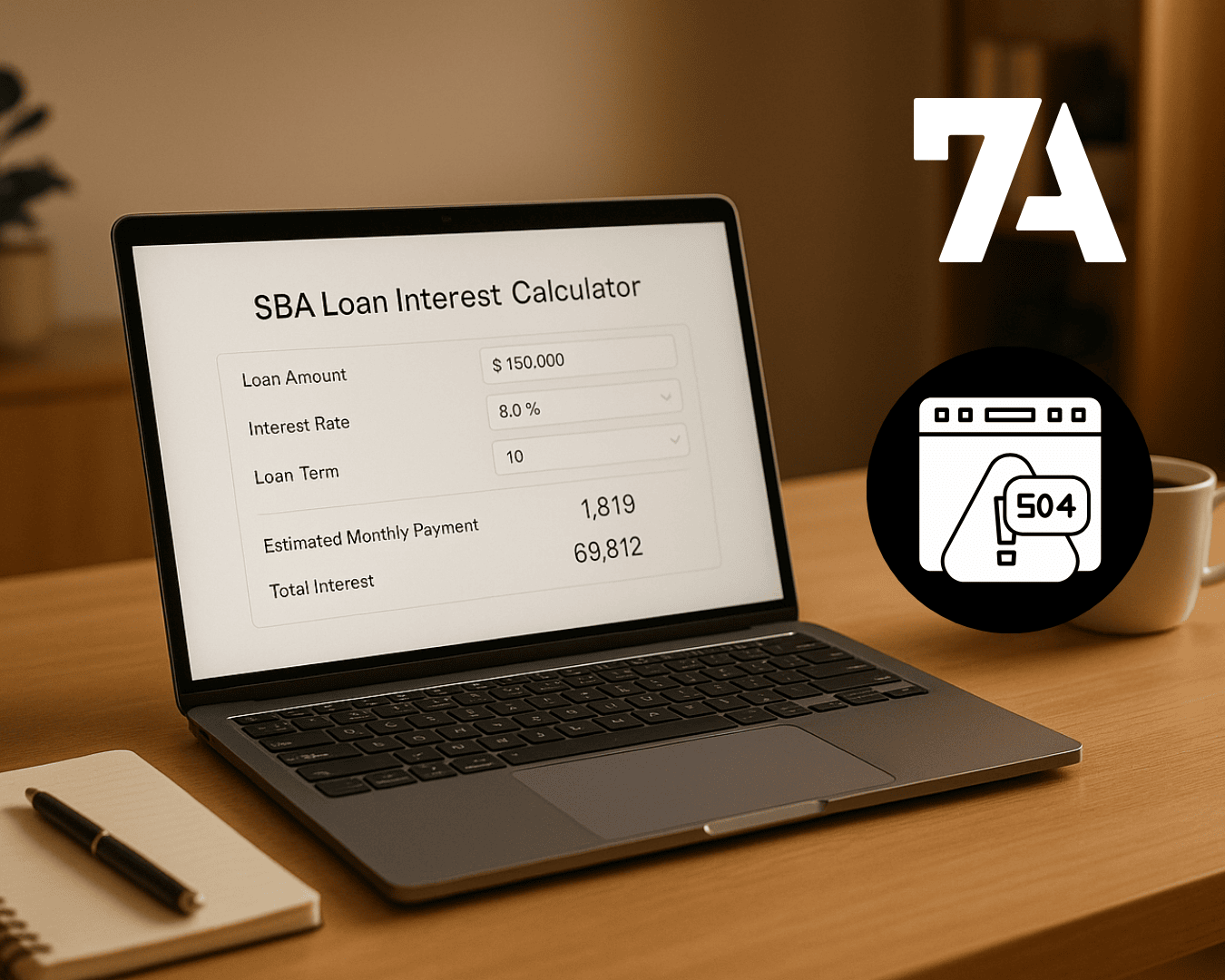








%20Loan%20Application%20Checklist.png)
